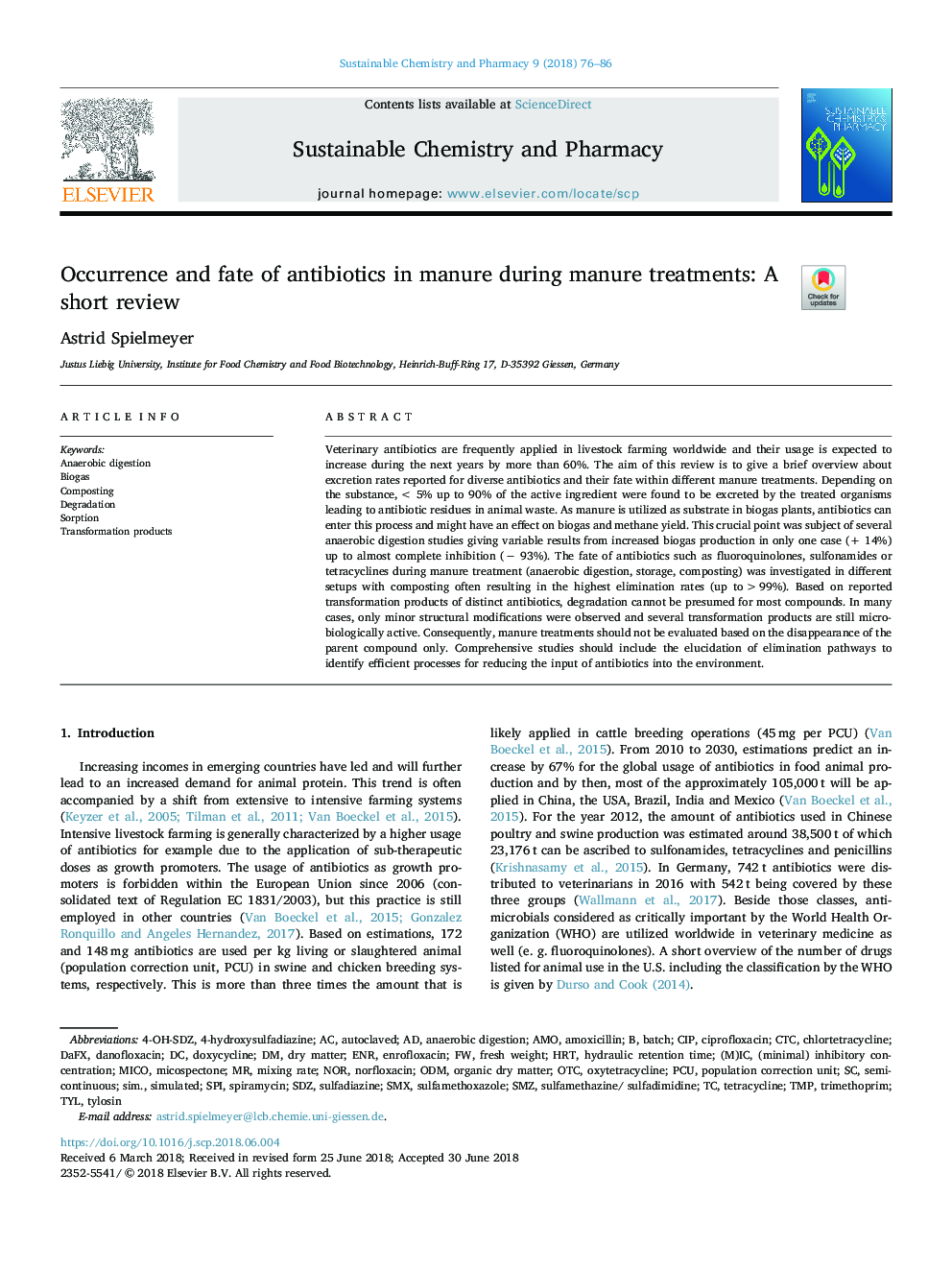| Article ID | Journal | Published Year | Pages | File Type |
|---|---|---|---|---|
| 8862576 | Sustainable Chemistry and Pharmacy | 2018 | 11 Pages |
Abstract
Veterinary antibiotics are frequently applied in livestock farming worldwide and their usage is expected to increase during the next years by more than 60%. The aim of this review is to give a brief overview about excretion rates reported for diverse antibiotics and their fate within different manure treatments. Depending on the substance, <â¯5% up to 90% of the active ingredient were found to be excreted by the treated organisms leading to antibiotic residues in animal waste. As manure is utilized as substrate in biogas plants, antibiotics can enter this process and might have an effect on biogas and methane yield. This crucial point was subject of several anaerobic digestion studies giving variable results from increased biogas production in only one case (+ 14%) up to almost complete inhibition (â 93%). The fate of antibiotics such as fluoroquinolones, sulfonamides or tetracyclines during manure treatment (anaerobic digestion, storage, composting) was investigated in different setups with composting often resulting in the highest elimination rates (up to > 99%). Based on reported transformation products of distinct antibiotics, degradation cannot be presumed for most compounds. In many cases, only minor structural modifications were observed and several transformation products are still microbiologically active. Consequently, manure treatments should not be evaluated based on the disappearance of the parent compound only. Comprehensive studies should include the elucidation of elimination pathways to identify efficient processes for reducing the input of antibiotics into the environment.
Keywords
TMPTYLSDZSMZPCUSMXENRNORTrimethoprimODMOTCSPICIPHRTCTCAmoxicillinSpiramycinEnrofloxacinOxytetracyclineBiogasTetracyclineDegradationTylosinSorptiondanofloxacindoxycyclineBatchhydraulic retention timeSulfadiazineSulfamethoxazoleCiprofloxacinSimulatedAMOdry matterorganic dry matterTransformation productsMixing rateNorfloxacinSemi-continuousAnaerobic digestionfresh weightCompostingChlortetracycline
Related Topics
Life Sciences
Environmental Science
Environmental Chemistry
Authors
Astrid Spielmeyer,
